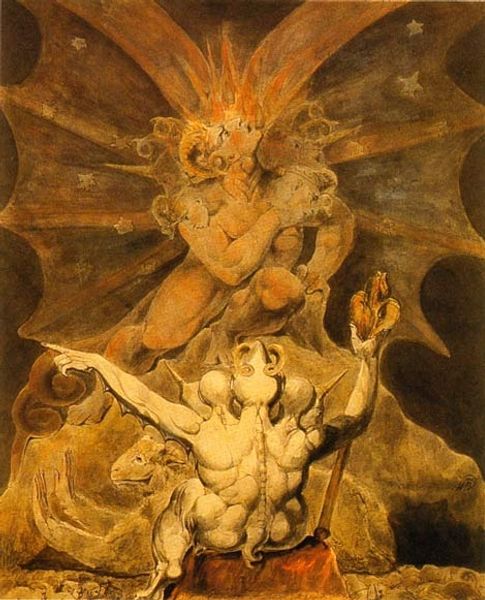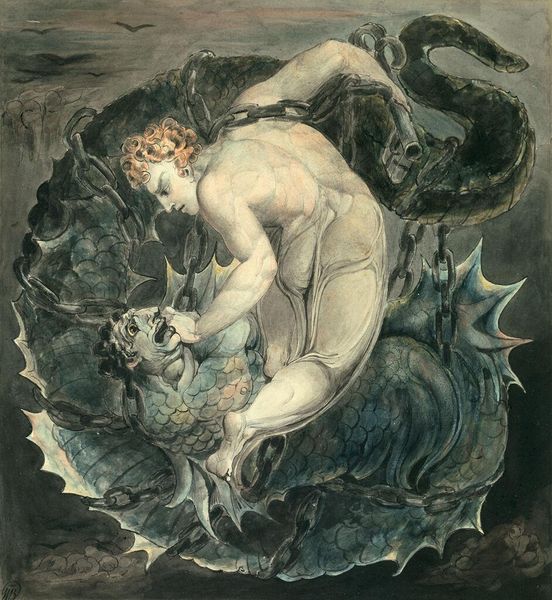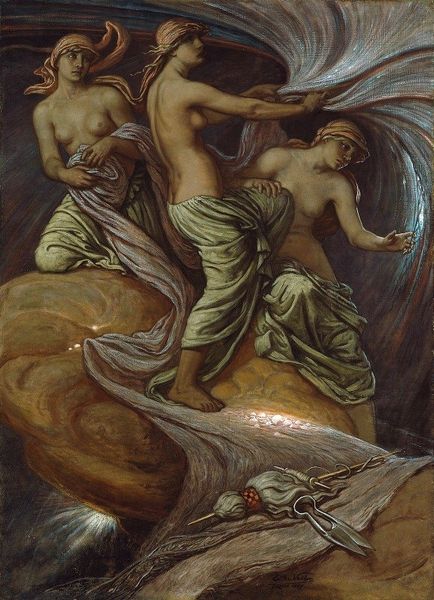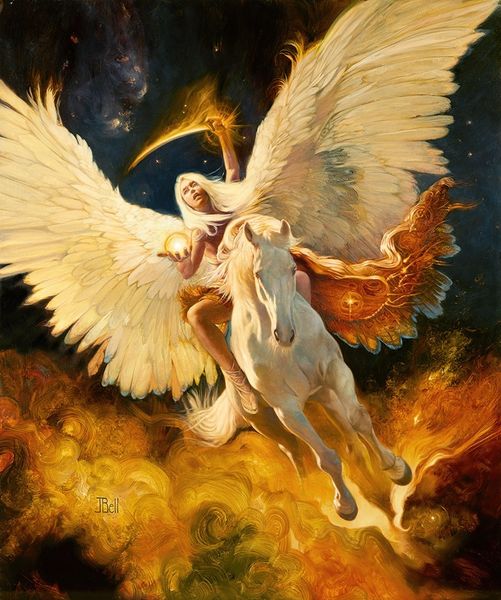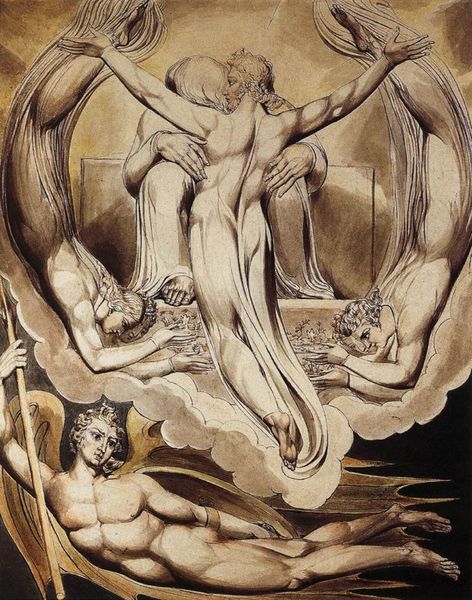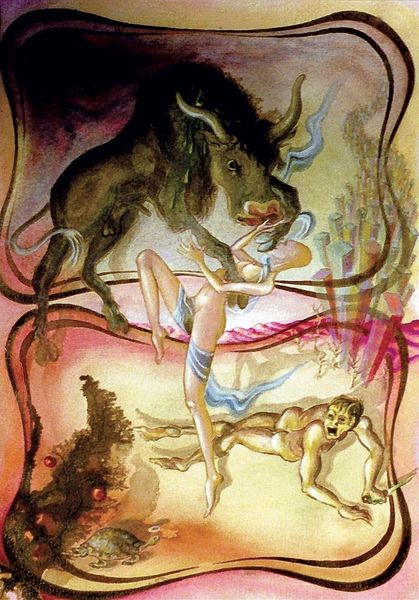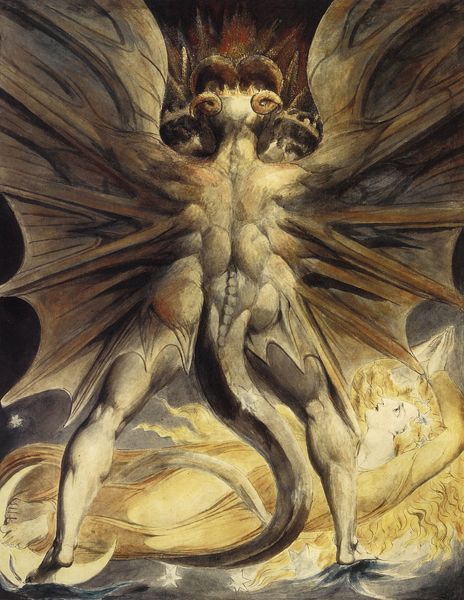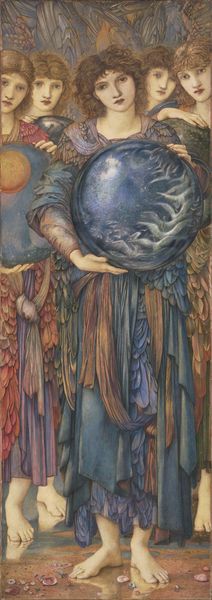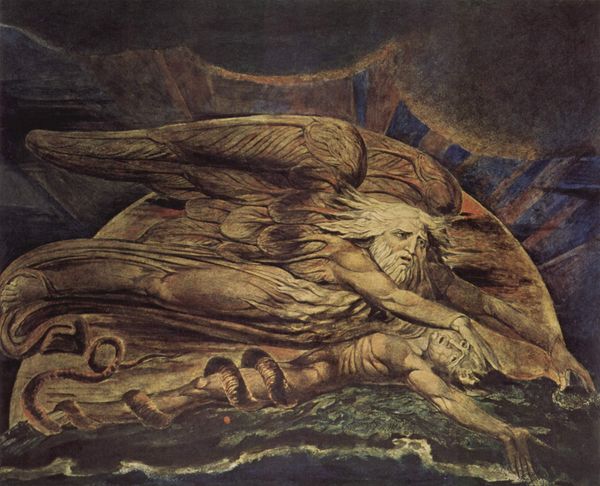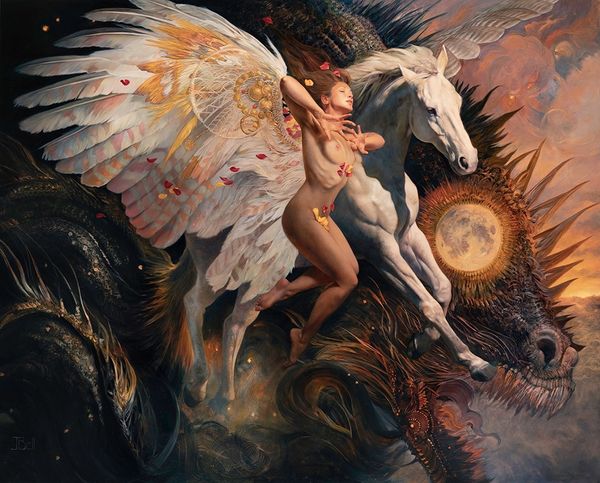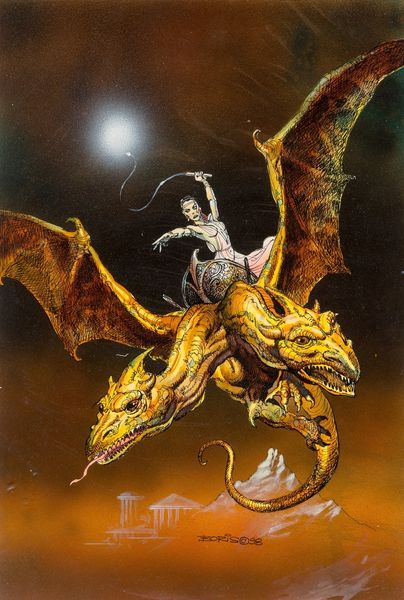
Dimensions: 40 x 32.5 cm
Copyright: Public domain
Curator: William Blake created this watercolor painting, “The Great Red Dragon and the Woman Clothed in the Sun,” around 1810. It’s based on a passage from the Book of Revelation. Editor: It's immediately unsettling. The way the dragon looms overhead, it feels heavy, oppressive. There is this contrasting light radiating from the woman. You see the dragon above and this almost earthy, writhing form—what could it be?—below her. What strikes me most is the tension between that earthiness and the light that shines off the woman and those globe-like forms above her head. Curator: Absolutely. Blake often used mythological and biblical scenes to critique contemporary society. Consider the historical context. This was the height of the Napoleonic Wars, a period of intense political and social upheaval. Blake saw the Dragon as symbolic of worldly power, corruption, and tyranny that oppressed spiritual values. Editor: Thinking about it as watercolor, the application is just extraordinary. There’s a texture to the Dragon's wings, it almost looks like old, beaten leather, and then next to that, these ethereal swirls, almost like he's captured movement with simple washes. It’s not just imagery; it’s the making process and materiality that enhances this dramatic conflict, that makes it potent and expressive. Curator: The politics are important here too. Blake aligned himself with those who felt spiritually oppressed. The woman represents the New Jerusalem, a symbol of hope and spiritual liberation. It is a historical yearning reflected across his entire body of work. Editor: Right, and look at the labor implied. The build-up of color, stroke after stroke, constructing not just an image, but an entire atmosphere thick with spiritual meaning. Even though this watercolor is not large in scale, its visual weight feels monumental. Curator: Blake's legacy, in this case, is how his art became a call for resistance against authoritarian control. It remains incredibly relevant. Editor: I find myself fascinated with his ability to use fairly humble materials—paper, water, pigment—to create something that feels simultaneously grounded and transcendental.
Comments
No comments
Be the first to comment and join the conversation on the ultimate creative platform.
